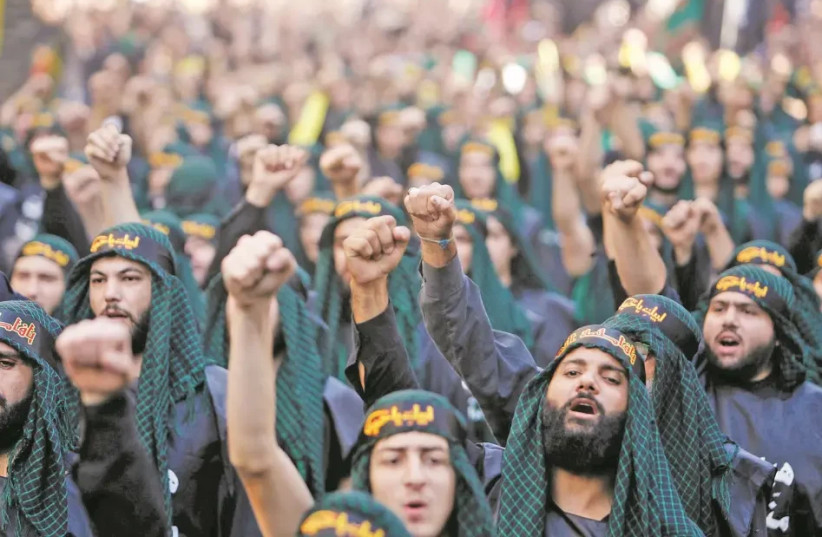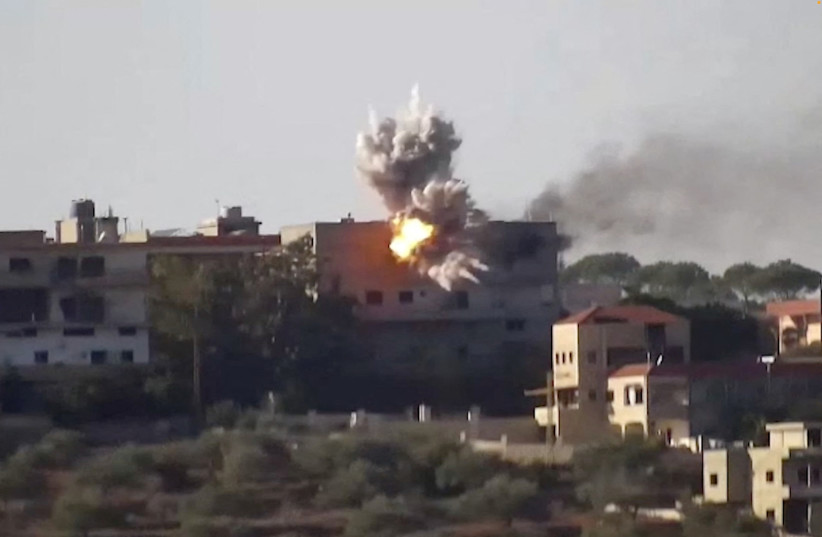The Israel-Hamas war in Gaza will continue to take up the main headlines for some time. Yet, now the primary strategic question is probably what will happen in regards to Hezbollah up the North.
In the South, the IDF will likely win – if it has not largely won already. The question is only by how much – how much of Hamas will remain intact, how chaotic will Gaza be.
However, the conflict is still wide open up North, with an even larger, more deadly war between Hezbollah and the IDF being just as possible as a diplomatic solution.
What is new from the last few days is that the IDF has begun a more aggressive approach to intimidate Hezbollah into the second option – a diplomatic deal – to discourage a conceivably much larger war from breaking out.
Weeks ago, Hezbollah fired on Israel more than 1,000 times, such that even this number has probably grown quite a bit by now.

But the Iranian-proxy terrorist group has not unleashed its full 150,000 rocket arsenal as of yet, though, if an all-out conflict were to erupt, it has the estimated capability of discharging up to 8,000 rockets per day in the opening days, including dozens-to-hundreds of potentially devastating precision rockets.
What is Lebanon capable of - and is the IDF prepared?
Other than October 7, Hamas mostly fired hundreds of less-deadly rockets per day in the early days of the war, and even on that first day, this was nowhere near Hezbollah’s capacity.
So what is the IDF’s plan?
There is no exact plan, but there are hopes, attempts at slowly probing and feeling out Hezbollah’s commitment to take further action.
So for one, the IDF is now hitting more targets – some of them serious – with greater physical, collateral damage.
In turn, it hopes that giving Hezbollah a small taste of the destruction it has inflicted on Gaza will lead the terrorist group to agree to some kind of voluntary withdrawal of its Radwan special forces away from the border.
But the definition of this distance is far from clear.
Most officials and analysts estimate it to be at the edge of the Litani River. The problem is that the river does not run straight, with parts of it being dozens of kilometers from Israel, and others dipping down almost right next to the border.
Most officials and analysts estimate it to be at the edge of the Litani River. The problem is that the river does not run straight, with parts of it being dozens of kilometers from Israel, and others dipping down almost right next to the border.
So when Israelis say the Litani River, really what they mean is this area – plus the border set by UN Resolution 1701 in 2006.
Still, what that means is also up to interpretation. This is because the map of UN Resolution 1701, which shows several different zones managed by a large number of disparate subunit peacekeeping forces from different countries, has been in utter disarray since 2006.
In other words, Hezbollah would be expected to self-withdraw from a murky security zone on its own, without the IDF having forces in that zone to keep it away. Should Hezbollah cross into that zone, the IDF would fire on it, and that threat in itself would maintain the security zone.
This makes sense, given Israel’s need to restore the northern residents’ sense of security so that they will feel safe to return home, but it clashes head-first into a wall of Hezbollah’s completely different priorities, such as maintaining a conflict with Israel over Mount Dov, and showing the region that it is in an eternal conflict with the Jewish state.
Some in the defense establishment who think this can work, argue that much of Hezbollah’s pre-October 7 forces have already withdrawn further back from Israel’s border to avoid the ongoing exchanges of artillery and airstrikes.
But why would Hezbollah end the conflict with a much weaker position on the border with Israel – all while it believes that Jerusalem is still afraid to go to war?
Some top defense officials have been repeating how surprised Hezbollah is at how hard the IDF is hitting it, citing its loss of over 100 of its operatives.

And yet, however “surprised” it might be, that has not stopped the terrorist group from continuing to fire on Israel day after day.
This means that Israel may very well need to take much more drastic action against Hezbollah.
How exactly will it do that without pressing Hezbollah into an all-out war?
Is there a “Goldilocks” scenario of escalating just enough with Hezbollah to scare it into compliance with a deeper security zone, while not going over the line into a full-scale conflict?
The honest answer is no one knows.
This is why the IDF is escalating very gradually.
Top defense officials want to convey a message to Hezbollah that Israel is firm in its resolve, but is also trying to avoid a major war, and that the terrorist group should take as graceful an exit as possible from the current conflict.
Whether this non-plan plan will work is anyone’s guess, but we are getting closer to the endgame point where fateful decisions will be made, ones which will shape the North’s future for some years to come.
